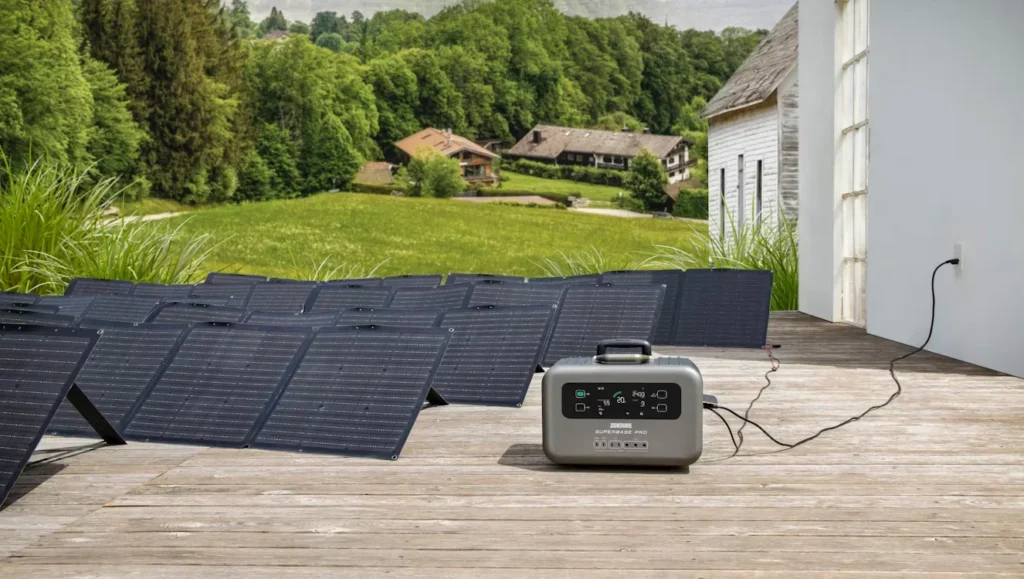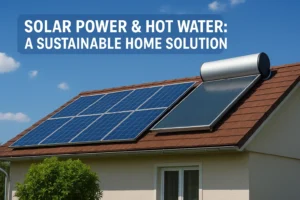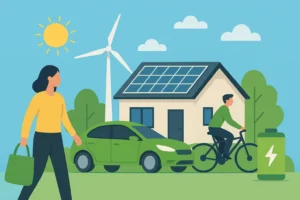Disclaimer: This article is for informational purposes only and does not constitute professional advice. Always consult certified electricians or emergency preparedness experts when planning backup power systems, especially for medical or life-support equipment. Product performance may vary depending on usage, environment, and equipment compatibility.
The sudden hush of a power outage raises immediate alarm, food rotting in refrigerators, life-saving medical devices going dark, and a growing sense of unease about when the lights will come back on. Above: Climate disasters are on the rise, and households are increasingly turning to solar generators for their backup power needs. However, the crucial question remains: Can such clean energy forms truly support the power needs of these essential appliances?
Introducing X-Boost technology is the game changer: it’s an innovation that allows it to support power through a 2000W inverter. This breakthrough is especially appealing to emergency preparedness planners who want to maintain power sources for emergency facilities, ensuring they remain operational during prolonged outages. Writing on the edge: Capacitance. Let’s explore the potential of these new-age solar generators as we uncover the limitations behind the essential capacity of how the X-Boost technology optimizes their usage and what real-life application proofs demonstrate that they work reliably in emergencies.
Understanding Solar Generator Capacity Limits
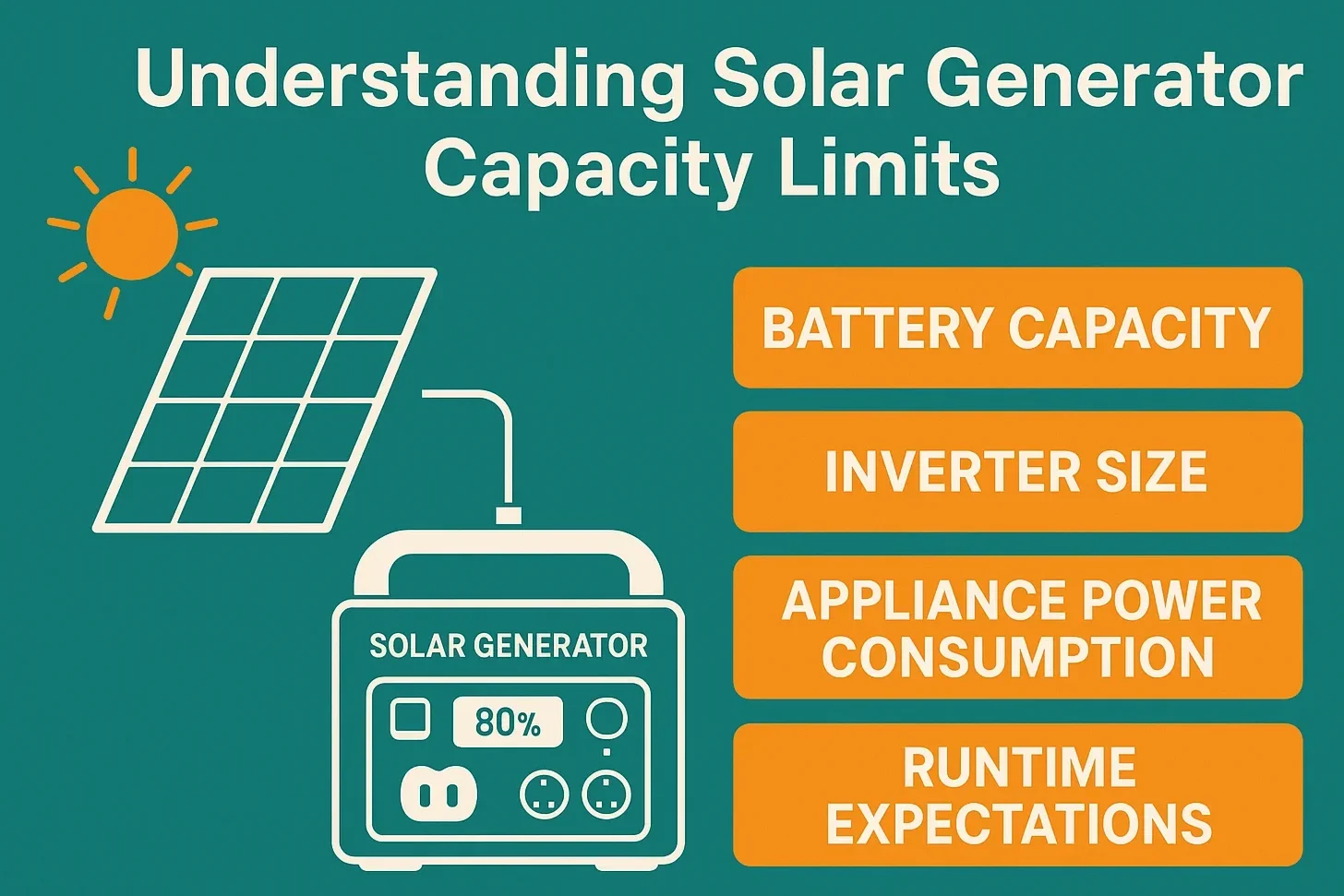
With solar generators, emergency preparedness requires looking past marketing terms. Although ampere-hours (Ah) are frequently rated, watt-hours (Wh) are a more realistic measure of usable capacity. For example, a 1000Wh generator can theoretically power a 100W device for 10 hours, but actual performance can differ significantly.
The most significant surge comes each time your equipment starts up; surges can be 3-5 times the running power. A regular fridge uses 200W when running but requires 1,200W when starting up, which is significantly more than what most simple generators can handle. Likewise, AC units frequently peak beyond 2,500W, and life-saving medical devices, such as oxygen concentrators, can spike to 600W from a 120W standby.
For outside use and demanding services, the reliability of runtime during blackouts is crucial. Divide the generator size by the total watts (surge and continuous) required. For instance, a 2000Wh generator supplying a refrigerator (200W running/1,200W startup), CPAP (60W), and general lighting (100W) needs to accommodate both constant loads and occasional surges. It could provide 8-10 hours of runtime before needing a recharge.
X-Boost Technology: Engineering Breakdown
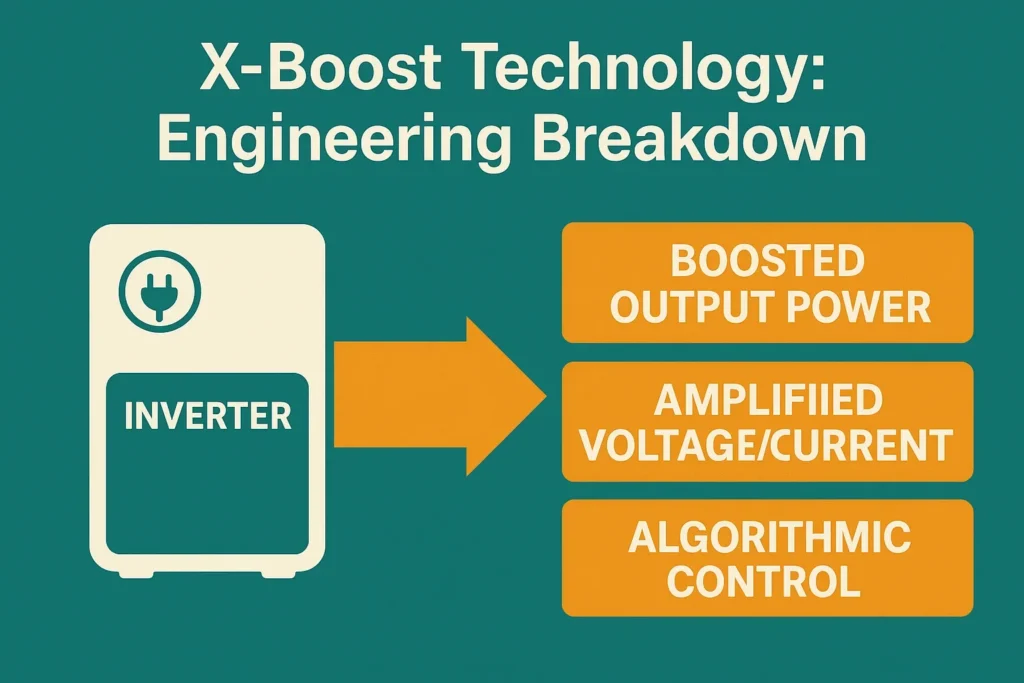
How Intelligent Power Management Works
At its foundation is X-Boost technology, developed by industry leader EcoFlow, which utilizes advanced power electronics to mitigate sudden power surges. The surge-absorption circuit, equipped with a surge absorber, utilizes power supplied by the generator to temporarily draw power to another outlet, thereby maintaining a stable voltage even when a high-draw device is activated. This smart power balance enables the generator to support motor starting peaks to 2.5 times the generator’s capacity without stalling. The device is designed to monitor the power drawn from all outlets constantly. It can react in a nanosecond, tripping the output to safeguard against overload while maximizing the power available to your vital equipment.
AC Output Redefined
Furthermore, X-Boost can deliver even more power, while advanced pure sine wave inverter technology ensures smooth operation without glitches for sensitive electronics and medical devices. It provides a clean, stable signal comparable to utility-sourced electricity, with low harmonic distortion. The trick, for Resonant in this case, is in that dynamic power scaling which can, for a short time, manage to raise the upper limit of the output capacity by 30%…40%, way over the maximum rated, but for sure, the place where those limit-pushing startups are managed gracefully.
Implementation Guide for Emergency Plans
Begin by auditing all your devices as the starting point for your emergency power planning. List all essential appliances and record both running and surge wattages from labels on the back of each appliance. All medical instruments should receive a priority document specifying precisely what is needed and for how long. For refrigerators, allow 1,200W surge capacity and 200W of continuous power. Add any critical lighting circuits and comms charging to your total.
Sustainable Power Solutions for Emergency Preparedness
The development of X-Boost tech is a testament to this commitment to innovative progress in the green energy sector, delivering a new dawn in terms of their ability to power demanding appliances easily. These systems have been rigorously tested and used in the field for years with great success, delivering enough power for even the most demanding loads (such as refrigerators, medical devices, and high-wattage devices like power tools) on par with or better than traditional gas generators. This advancement is beneficial for disaster response in general, as it provides sustainable, quiet energy without the need for fuel storage.
Ultimately, the success of solar backup power is a result of holistic capacity planning and system integration. By calculating your total power needs and surge capacity and by installing the right solar panel array, you can have a robust power system to stay at home and complete essential tasks when the power goes out. The solution is to address emergency power as a comprehensive package rather than just an individual, short-term device.
Before the next power outage hits, evaluate your critical device needs. Write down running and surge watts, plot good generator locations, and practice with your family. After proper planning and utilizing modern X-Boost tech, they are now a reliable and sustainable option for keeping critical systems operational when the grid goes down.






